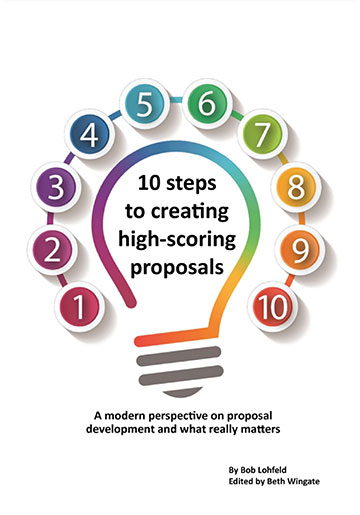How to Survive and Thrive Under FAR Part 43 Reforms

By Bruce Feldman and Jacob Bertram
This is the latest article in a series on the impact of the Revolutionary Federal Acquisition Regulations (FAR) Overhaul (RFO) changes that affect government contractor (GovCon) business development, capture, and proposal programs. This article focuses on changes to FAR Part 43 – Contract Modifications and identifies the opportunities and risks that industry growth teams face as a result of FAR 2.0 acquisition policy changes. If you would like more information concerning how to address FAR changes, contact Lohfeld Consulting.
Introduction to FAR 2.0
On May 6, 2025, the Office of Management and Budget (OMB) launched Phase 1 of the FAR RFO, also called FAR 2.0[1], to reduce red tape and empower agencies to buy more flexibly and be more mission-aligned. The changes proposed for FAR 2.0 are implemented as FAR deviation guidance, with formal change approvals planned for FY26 and beyond.
FAR 2.0 shifts the acquisition regulation paradigm to decentralize acquisition authority, focus federal regulation on statutory compliance, and empower agencies to develop agile, mission-first frameworks. The specific revisions to FAR Part 43 reflect FAR 2.0’s emphasis on streamlining the FAR by removing content that is not mandated by statute and on driving performance-based outcomes, in this case, through elevating the importance of risk management when making contract modifications.
This article details the proposed changes in the revised FAR Part 43 – Contract Modifications and explores their implications for capture, proposal, oversight, and procurement professionals alike.
Overview of FAR Part 43’s Evolution
The original intent of FAR Part 43[2] was to establish a framework for preparing, processing, and documenting post-award modifications to Federal Government contracts. It aimed to ensure that changes to existing contracts, whether directed unilaterally (under specific clauses) by the government or negotiated bilaterally (through negotiation with contractors), were made legally and transparently. Part 43 also formalized that only contracting officers had authority to modify contracts, thereby protecting industry from costs that might be incurred by acting on unauthorized instructions.
The FAR 2.0 revision of FAR Part 43[3] changes the intent from defining contract change procedures to mandating that the contracting officer and contractors manage risks and ensure accountability[4] when making a contract modification. This is a profound change that empowers the contracting officer to establish the procedures they deem appropriate to the situation. FAR Part 43 changes also remove procedural guidance that is not grounded in statute, consistent with the overall FAR 2.0 objective of streamlining. The procedural guidance may be redirected to advisory “buyer guides” or deleted.
Examining the Shift in FAR Part 43’s Approach
Table 1 describes the significant changes and impact on GovCon resulting from the FAR Part 43 approach.
Table 1: Significance and impact of FAR Part 43 changes.
| Change and Original FAR Reference | Why It’s Significant | Impact to GovCon |
| Refocused Scope Statement § 43.100 | Reframes FAR Part 43’s scope from procedural to one that limits risk to public and government. | Contracting officer and contractor now have responsibility to manage risk in contract modifications rather than just follow regulatory guidance. |
| Reinforced Contracting Officer Authority § 43.202 | Makes identification and management of risk of unauthorized direction a responsibility of the contracting officer. | Increased government awareness and sensitivity to the potential for contract modifications grounded in unauthorized direction. |
| Change Order Definitization Timeliness and Tracking § 43.304(b) | Elevates attention of risk to schedule for completing equitable adjustments. | Increased contracting officer attention to industry impact of delays in completing Requests for Equitable Adjustments (REA). |
| Notification of Unauthorized Changes § 43.204 | Makes reporting of possible unauthorized direction a contractor risk management responsibility. | Increased industry need to make program personnel aware of the requirement to notify government when potential for unauthorized direction is present. |
For Government Buyers: What’s New
Government buyers should understand that the FAR 2.0 update changes the approach of the contracting officer responsible for a contract modification.
- Focus on managing risk. The contracting officer now has a responsibility to identify and manage uncertainties that jeopardize contract performance. This change requires proactive engagement to identify and address uncertainty, rather than simply following procedures.
- Contractor’s responsibility regarding unauthorized direction. FAR Part 43 has always had language requiring contractors to notify the government of possible unauthorized direction. The scope change in Part 43 implies that the contractor now has a duty to train their workforce to be proactive in identifying and responding to that possibility.
For GovCon: What You Need to Do
Contractors can expect to see increased government attention on getting contract modifications completed on time and with controlled risk.
- Changes in contract modification procedures. Original FAR Part 43 procedures that were not grounded in statute may have been removed and shifted to advisory buyer guides or other documents outside the FAR. This approach is an overall FAR 2.0 objective and gives the contracting officer greater freedom to choose how to modify the contract. Industry contract administrators need to engage with the contracting officer on the expected procedure when the need for contract modification becomes evident.
- Risk management assistance. Contracting officers may request that industry provide input on the risks and mitigations associated with contract modification. Industry should be prepared to train contract administrators on the basic principles of risk management.
- Workforce education on unauthorized direction. Industry needs to train all program staff on recognizing and reporting possible unauthorized direction.
What This Means for Capture, Proposal, and Oversight Professionals
Because contract modifications are a post-award activity, they have limited impact on capture and proposal professionals. Ideas to consider:
- Include content on a risk management approach for contract modifications in the Contracts volume of your proposals.
- Include content on risk management in the Technical and Contracts volumes of your proposal when you are discussing potential changes to your contract in execution (for example, innovations for government consideration that are not in the baseline).
Corporate infrastructure must budget and plan for training on:
- Risk management for contract administrators.
- Identifying and reporting on possible unauthorized direction for the program workforce.
Conclusions
FAR 2.0 marks a foundational shift from a centralized rulebook to a decentralized acquisition framework. These changes align with the April 2025 Executive Order, “Restoring Common Sense to Federal Procurement,” which calls for:
- Removing unnecessary regulations.
- Empowering agencies to meet mission needs.
- Encouraging simplicity, speed, and commercial engagement.
GovCon leadership must prepare now for these changes! Key FAR Part 43 takeaways:
- Contracting officers now have a duty to approach contract modifications with the intent of limiting risk to the government and the public. This implies that contracting officers and their industry counterparts must be able to work with risk management concepts and techniques.
- As with many of the revised FAR parts reviewed to date, contracting officers will have greater freedom to decide on contract modification procedures. Industry contracts teams must be ready for changes.
If you need help applying new FAR regulations to your next capture or proposal, please contact Lohfeld Consulting; our experienced contracting officers and subject matter experts (SMEs) can assist you.
Relevant Information
By Bruce Feldman and Jacob Bertram
Bruce Feldman, Vice President, Lohfeld Consulting Group. Bruce brings more than 30 years of experience as a subject matter expert (SME) in business development, capture management, and proposal development specializing in Space and National Intelligence programs for the U.S. Air Force (USAF), U.S. Space Force (USSF), Intelligence Community (IC), Office of the Secretary of Defense (OSD), Department of Defense (DOD) 4th Estate, and Combatant Commands. He leads Lohfeld Consulting Group’s Artificial Intelligence (AI) initiatives and is the lead trainer for our Generative AI for Proposal Professionals classes, a trainer for our Capture Management and Strength-Based Winning® classes, as well as a consulting advisor.
Jacob Bertram is a senior leader in the federal procurement industry with over 20 years of experience spanning GSA, the Department of Energy, DCMA, and DCAA. He currently advises Fortune 500 companies, government agencies, and federal contractors on acquisition strategy, pricing, audit readiness, and operational efficiency. Jacob is DAWIA Level III certified in Contracting and a member of the Defense Acquisition Corps.
Lohfeld Consulting Group has proven results specializing in helping companies create winning captures and proposals. As the premier capture and proposal services consulting firm focused exclusively on government markets, we provide expert assistance to government contractors in Capture Planning and Strategy, Proposal Management and Writing, Capture and Proposal Process and Infrastructure, and Training. In the last 3 years, we’ve supported over 550 proposals winning more than $170B for our clients—including the Top 10 government contractors. Lohfeld Consulting Group is your “go-to” capture and proposal source! Start winning by contacting us at www.lohfeldconsulting.com and join us on LinkedIn, Facebook, and YouTube(TM).
SOURCES:
[2] https://www.acquisition.gov/far/part-43#FAR_Subpart_43_2
[3] https://login.acquisition.gov/far-overhaul/far-part-deviation-guide/far-overhaul-part-43#FAR_43_302
[4] The revised FAR Part 43.100 Scope of Part has new language that states, “This part provides contract modification standards for the workforce to limit risk to the public and government.”
Paperback or Kindle
10 steps to creating high-scoring proposals
by Bob Lohfeld
contributors Edited by Beth Wingate
Subscribe to our free ebrief
Teaming friends, frenemies, and enemies—12 tips to mitigate harmful effects
Did you know that contracting officers spend up to 20% of their time mitigating disputes between teaming partners? In an informal poll we conducted on LinkedIn last month, 40% of respondents classified their teaming partners as “frenemies” on their last bid.
Explore Further
- Advice (539)
- AI (30)
- APMP (18)
- Army MAPS Contracts (3)
- Business Development (294)
- Capture Management (266)
- Complex Technology Grants Services (26)
- Favorite Books (5)
- GenAI (4)
- Go-to-Market (27)
- Graphics (5)
- Lohfeld Books (2)
- NASA SEWP VI Contracts (2)
- Navy SeaPort-NxG Contracts (2)
- NIST MSE Grants (1)
- NIST NAPMP Grants (2)
- Past Performance (63)
- Post-submission Phase (14)
- Pre-RFP Preparation (264)
- Proposal Management (341)
- Proposal Production (77)
- Proposal Reviews (40)
- Proposal Writing (109)
- Pursuit Phase (108)
- Research Report (4)
- Resources (63)
- Tools & Tips (423)
- Training (13)
- Uncategorized (223)

Sign Up for INSIGHTS and Download your FREE book
We'd love to help you with your proposals. Enjoy our complimentary Lohfeld Consulting Group Capture & Proposal Insights & Tips book with your FREE subscription to our Insights Newsletter.
GET YOUR FREE BOOK



